08.06.2023
Stefania Orfanidou : Heaven is a place (A place where nothing nothing ever happens¹)
Visual arts
The trolley bus is taking me to Stefania Orfanidou’s studio in Pagrati, the region of Athens where I grew up and moved from years ago. I know that sense that the day is over when the trolley bus turns right after Kallimarmaron stadium — the sound of the machine as it switches lines, resembling that of a deep, long breath. I think of Rena Papaspyrou, Stefania’s neighbor, an iconic Greek artist, who said to me once that “nostalgia is nonsense”. The recollection of these words comforts me, because it really is nonsense. I’m standing in front of the building where Orfanidou lives and works, among the square and the cafes, and I know, that sense of familiarity is not derived from a nostalgic emotion and -let’s admit it- the illusion of ownership that comes along with it. Right there, on that piece of public space I’m sensing instants of a past life escaping to the present and that transgression is by itself, one charming and uncanny connection with my surroundings, here, now.
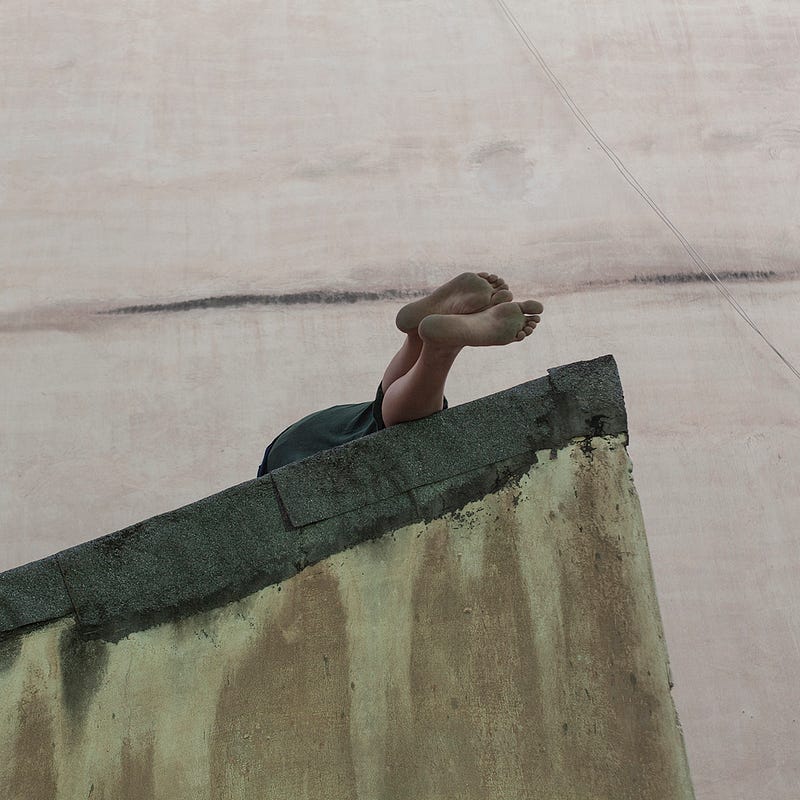
Stefania is expecting me in a bright spacious dining room, with its furniture and objects carefully put in place. Beside a gracefully organized workstation, a sleek surface of a dining table accommodates a few of her self-published books: Pendulum, Cold Turkey, Jaguar Sun. Later, she would admit to me that this neat surface was rather busy a few minutes before I arrived. There, on the table and up until the clean empty wall surface of its background, dozens of her printed photographs had been spread over. It is a ritual she performs regularly: she selects a group of printed images and disperses them, she arranges and re-arranges them to discover well-hidden narratives, unconscious linearities that inhabited her lens when these stills had been captured. During this ephemeral display, it is not unusual for her to discover affinities of her more recent images with earlier projects, and in that case, she won’t hesitate to archive them back in the series where they belong. The process is indulging, it enhances her concentration, it allows her to observe strange kinships and contradictions among her images, and ultimately, it endorses her to imagine spaces, as immensely broad this term can be. In fact, when one attempts to delve into Orfanidou’s artistic and professional journey up until today, they come across with the infinite methods one can employ to serve the studies of space.
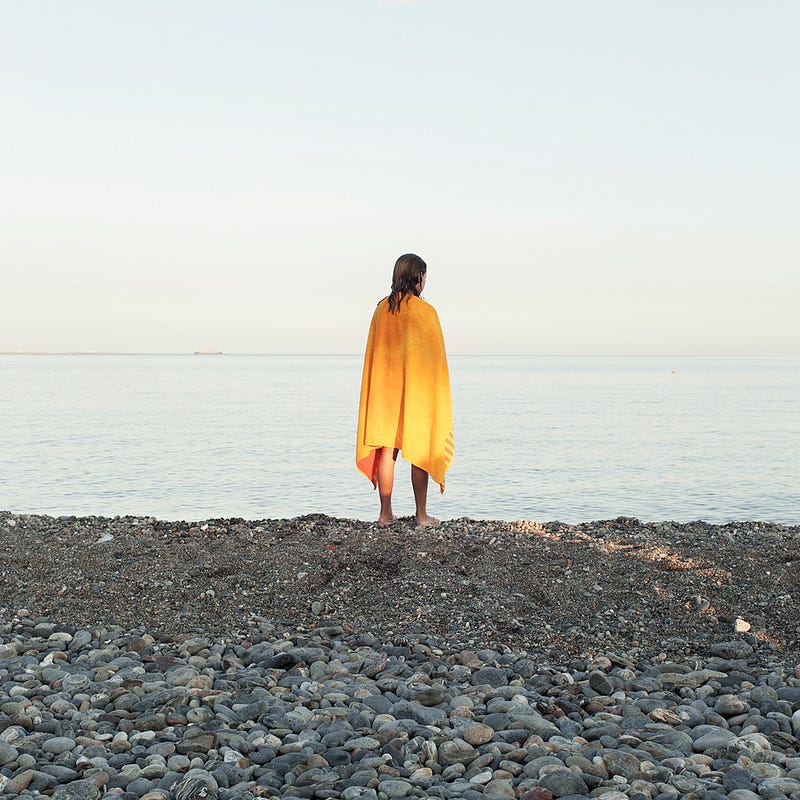
Stefania Orfanidou studied Architecture at the Polytechnic School of Thessaloniki. Until then, her childhood was shared between Chania, Crete and Kavala — all coastal cities, with a rich cosmopolitan history and evident urban traces of a multitude of cultures, ethnic and religious communities they have inhabited them over the centuries. In Thessaloniki, Stefania joined the student’s Photography Club and along with her studies, she started taking analogue pictures of her everyday life in the city. A few years later, she returned from the faculty’s trip in Tokyo with her first dummy of a photobook. A little after that, she spent a semester in the Photography School in Complutense University of Madrid and that time, she came back with the commitment to register at Stereosis School of Photography. Her visit in L’ Aquila resulted Pendulum, a book she has been working on for four years and one of her most personal works. From Berlin, she came back with the photos that composed Unseen, her 6-copy self-publication that was part of her thesis for the PARA-Poesis Post Graduate Program of the University of Thessaly. Today, Stefania Orfanidou is working as an architect and a photographer, residing in Athens permanently for the first time, and she already has at least three open project files, she feeds with new photos every day.
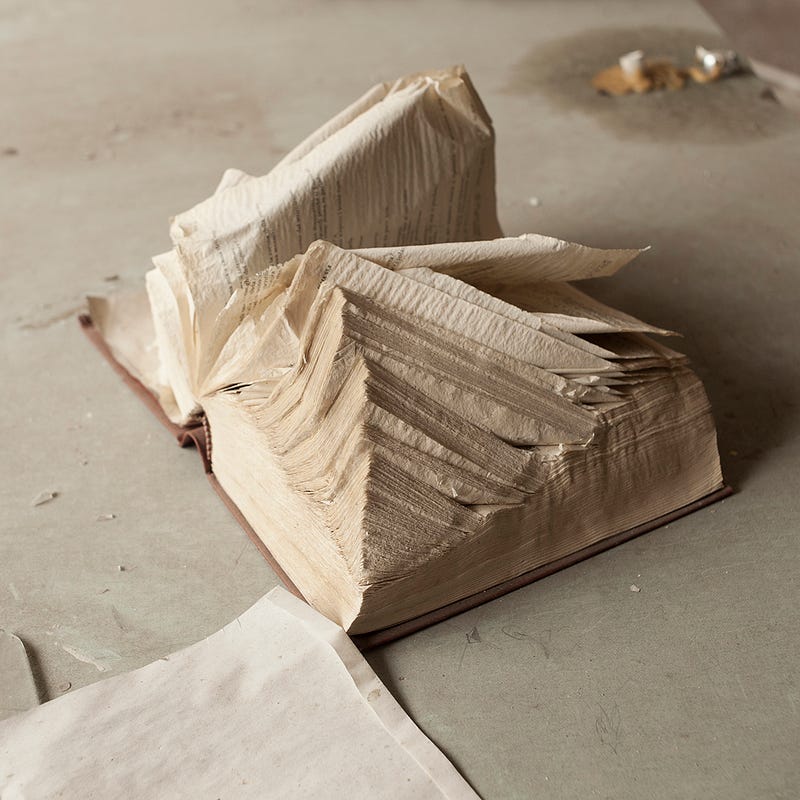
What occurs to her in those cities? During her studies, each change of location, each travel was an incident that unfolded another chapter of her career as an artist. Today, she avidly extracts material from the cities she inhabits, as well as from her regular excursions away from them. Orfanidou works in such a systematic and conscious way, it is impossible for me to think that she is simply amazed by the impressions from the urban and natural landscape, nor by the life and the character of the various urban and natural environments she finds herself into. Her academic and professional occupation with architecture has evidently provided her the means to get over such clichés. Stefania is blown away by her actual subjects, in the most cinematic way. In Cold Turkey, her body of work with photos taken between 2015 and 2018, a pair of bare feet is floating over our sight, cutting in half a building and a sky of cement. Next take: windows in order, each one covered -or blindfolded- by white sheets. Take three: afternoon at the beach, the figure of a girl in the center of the composition, her back covered in a towel resembling a golden cloak. The photographer drives our gaze towards the subjects, that may be human or non-human forms, objects or architectural elements that, quoting Barthes, “rise from the scene” and stand as “sensitive points and wounds”. Cold Turkey is slang for the sudden abstinence from a substance by an addict.
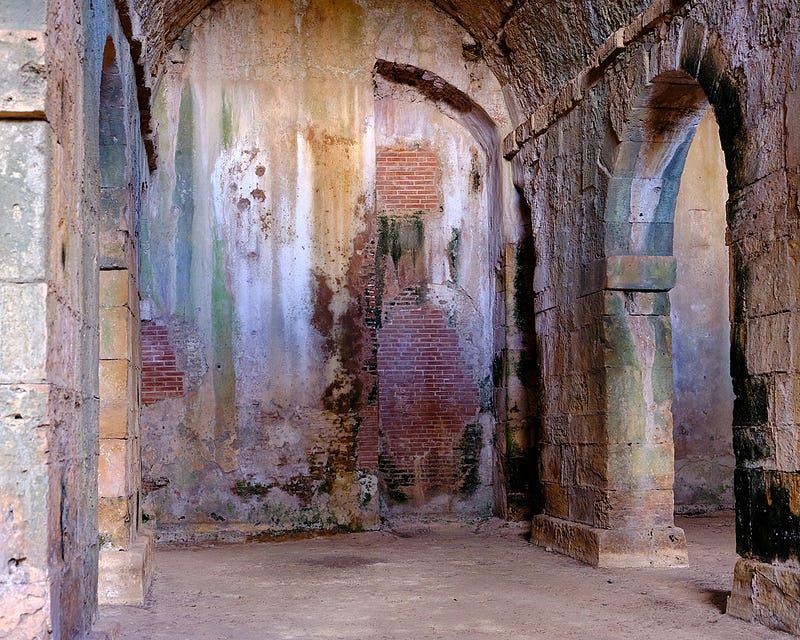
In Orfanidou’s works living and nonliving elements become storytellers, protagonists in a greater narrative where the lines between space and experience are undistinguishable. As active agents of the emotional or even the mythical, her subjects candidly traverse the layers she meticulously recognizes in the notion of space and visually brings to our notice. In her ongoing project Profanation Exercises, faces, details, material and human bodies, banal objects, intensely present in their own conjunction of time and space, form keyholes from where one can spy on a broader, surreal narrative. Her frames, motionless, yet intense and unquestionably pulsing, come from the domestic, the natural and the public realm, nonetheless, familiarity is equally prevailing in all of them. In Orfanidou’s work “inhabited space transcends geometrical space” as with her lens she follows -discreetly, yet daringly- lived experience, that is after all, what actually transforms our surroundings. In the same series, she might capture a snake-like path in a valley, a plaster statuette forgotten in a backyard, a loved one’s face under the sun. At the same time, the light she chooses to photograph in (afternoon hours, mostly), her gesture, her gaze, all address a unified environment, one that life has marked forever.
The city of L’Aquila in central Italy is one of these environments. There, the artist came to heal with a narrative of two ruptures, a personal and a collective, two major events: L’Aquila is the city where her parents met, and an area severely hit by a catastrophic earthquake more recently. Orfanidou went there to contribute as an architect to the restoration of the city and brought back with her a body of work that constituted her self-published book Pendulum. Within her images, the artist narrates the city’s wounds with gentle affection, reflecting in awe the collective trauma, as this is traced in space, in parallel with the rupturing point of time that signifies the beginning of one’s own existence. The remnants of human motion, the emptiness, the absence, her vague fragmental memories tell a profoundly human and timeless tale.
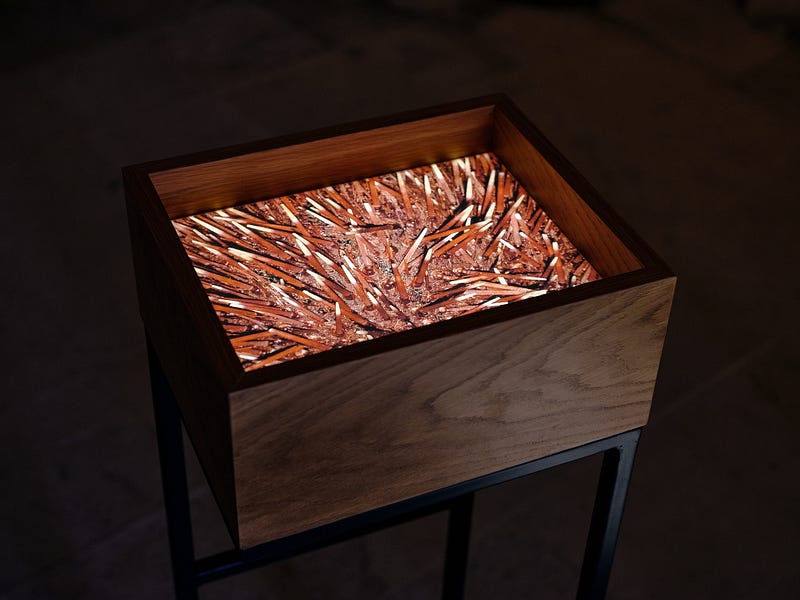
These nuances of memory that hide below a pile of stones, on a feather stuck on a wooden electricity column, under the tanned skin of someone we love, are also in the core of her ongoing project Cache. Stefania is using as a title this technological term, referring to the “hidden” data storage, to continue her research on the narratives that quietly inhabit the surface of physical reality. As she is out in the city and its outskirts, collecting material to complete the project, she envisions Cache in its final version occupying space itself. I am thinking that this would be inevitable, as her editions already consist 3D environments and I can already imagine how smoothly a viewer could immerse into her work in three dimensions, as naturally as visiting another unknown, yet familiar place.
Stefania Orfanidou was born in 1989. She is a photographer and an architect currently living and working in Athens and Chania, Greece. In 2019 she founded the architecture studio Chora Atelier, that integrates research, architecture and supervision, construction, interior and furniture design, books’ editing and scenography. In February 2019 she published the book Pendulum, a visual recounting of a return journey to the city of L’Aquila in Italy. In 2020 she received the SNF Artist Fellowship by ARTWORKS. In 2021 she published the book Cold Turkey that deals with the multiple levels of addiction, the relationship of dependence and mourning, the path to redemption. The same year she co-curated and participated in the art installation Daedala at Yiali Tzami, Chania, Crete. In 2022 she was nominated by VOID to join FUTURES European platform of contemporary photography. In her work, a personal experience or event, real or imaginary, is the starting point for fragments’ stitching and the composition of tales, where the irrational, the reasonable, the uncanny and the secret may coexist harmoniously. Her photographic work has been featured in magazines, galleries and festivals in Greece and abroad. Her work belongs to public and private collections.
Christina Petkopoulou, (Athens, 1992) is a free-lance curator, researcher and writer based in Athens. She has studied Archaeology and History of Art at the National and Kapodistrian University of Athens and the Paris I-Pantheon-Sorbonne and completed a master’s degree in Cultural Management at the Panteion University of Social Sciences. She is a member and the in-house curator of the A-DASH team, a researcher and curator of the online art projects a time of her own by Zoe Chatziyannaki and Athens Report by Anna Lascari. She has curated exhibitions and public programs (Lipiu, 2020, Playing Ground, Automatic Transmission, 2019, Liminal Aristeidis Lappas solo show, Praxitelous 33, 2016, Choro-graphies-Points of flight, Artscape Athens, 2014 and more). Her texts have been published in several editions and catalogues (The ArtNewspaper Greece, Lipiu, Vera Chotzoglou, Bona Fide, State of Concept, 2021, Ammophila II, Under the Burning Sun, 2021, The Feminine Sublime, 2019 and more). She has worked for the Greek Contemporary Art Institute (ISET) researching and documenting its archive and she has also collaborated with several cultural institutions such as the Athens Biennale (2013, 2015), Art Athina (2014, 2015) and Archaeological Dialogues (2015). In 2016, she was chosen for the Neon Foundation curatorial exchange program in collaboration with the Whitechapel Gallery and in 2019, she received the SNF Artist Fellowship by ARTWORKS. She also works as a teacher and a copy editor.
¹ Talking Heads, Heaven, 1979, from album Fear of Music
² Barthes, R. (1993) Camera Lucida (R. Howard, Trans.), Vintage Classics
³ Bachelard, G. (2014) The Poetics of Space, London, England, Penguin Classics.



